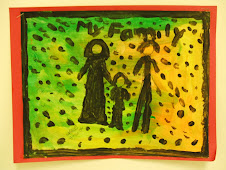This is a free lesson and must not to be reproduced or printed for commercial reasons without permission from the author of this blog. All rights reserved.

Step one – Always draw as lightly as you can so that you can
erase without a mess. Draw an oval. This is the skull.
erase without a mess. Draw an oval. This is the skull.

Step two – Draw another oval. This will be the face.  Step three – Add the shape of a cylinder to form the neck.
Step three – Add the shape of a cylinder to form the neck. 
Step four - Draw a line (red line) where the two ovals divide each other. This is where the eyes will be.
 tep five – Draw another line (red line) below the first. This is where the nose will be.
tep five – Draw another line (red line) below the first. This is where the nose will be.
Step six – Draw another line (red line) below. This will be where the mouth will be.
 Step seven – Draw the face (green line) using the red lines to guide you.
Step seven – Draw the face (green line) using the red lines to guide you.
Step eight – Next, draw a line (green lines)to form the neck line
and the Hijab at the back of the head.

Step nine – Now draw a line (green lines)to join up and make the bottom of the Hijab.

Step ten – To finish forming the Hijab, draw lines (blue lines) from the top of the head to the neck and across the forehead. Erase any lines which might protrude out of the face or else where.

Step eleven – Color in the face using a color you like.

Steps twelve – Color fill the forehead part of the Hijab with another color that you chose.
 Step thirteen – Color in the shawl.
Step thirteen – Color in the shawl.
Step fourteen – Add any decorative designs you would like.
 Step fifteen – Add a background.
Step fifteen – Add a background.Now you have completed a silhouette of a Muslima!
Experiment with designs and colors to make some very interesting pictures.Alhamduillah! After some practise you should be able to draw a head without all the construction steps.











